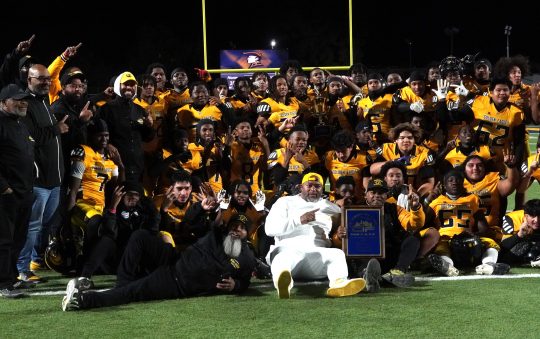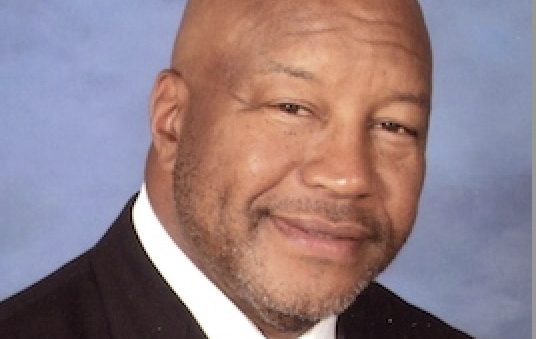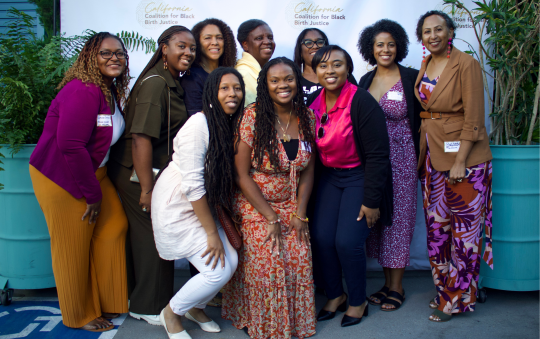
Mary Wilson pays homage to Lena Horne
On May 12, 2010, at Eso Won Books in Los Angeles — which was three days after Lena Horne died — 8th District Councilman Bernard C. Parks honored author-journalist Jim Gavin with a proclamation from the City of Los Angeles for his third book, Stormy Weather: The Life of Lena Horne (Atria Books/Simon & Schuster, 2009).
Gavin had just hit the casting Lotto: Mary Wilson, ex- of the Supremes, had been working at the Palm Springs Follies and had stopped by Toucans after her own show to see Kaye Ballard there. Gavin was there that night and spotted her.
As Wilson tells it, “Last May I was trying to find a way to get in touch with Lena Horne ’cause she’d been on my mind for about three weeks. [Around that time], I was working at the Palm Springs Follies… And I ran into the young man who’d written Lena’s bio, Stormy Weather. And he told me about a show he was doing about her … ”
Gavin says, “We hit it off right away … She was warm, unpretentious, down-to-earth.”
Says Wilson, “So I told him, ‘That’s something I’d like to do ’cause I’d just recorded my new jazz CD and DVD (“Up Close with Mary Wilson”), ’cause I’m doing jazz now …” Since the end of the premier girl group in 1978, she’d been touring the world with her own act, staying crazybusy.
Though you might think she’d always loved the Motown sounds that defined her, she’d actually grown up loving jazz and blues. Of course, all that changed when she began singing with the Supremes at age 13. Apart from her forays into standards as a Supreme, she says, she’s always had a kinship with jazz.
It stuck in Gavin’s mind that she had asked. Never thinking he could actually get her involved in the show, he nonetheless called his agents, who pitched it to her – and within a week, she was in.
Wilson is as thrilled to be a part of the event as is Gavin — and given her interactions over the years with Horne, it’s no wonder.
LAS: Did you ever get a chance to meet her while you were singing with the Supremes?
MW: In the Black community, we grew up on the Billy Eckstines, the Lena Hornes, the Bobby Blue Blands — that’s what our parents played. So I knew of Lena when I was 6, 7, 8 years old ‘cause my parents listened to her on the radio. So she was our hero — she was a huge star in the black community.
“Later on in life, we [the Supremes] were going to open at the Talk of the Town [in London] the next night. So we told Berry Gordy, ‘We want to see Lena!’ This was a chance of a lifetime! So they called her and let her know we were coming. They put out the red carpet for us. She put on a fabulous show! And then after the show, she sat there and talked to us for about an hour and a half. We had a great time backstage. So that was the first time I ran into her …
“And after that as the years went on, I would see her and she would say, Hey, Mary, how you doin’?’ And then when I graduated from NYU — there was something happening at Lincoln Center, around 1999 — and I was on the other side of wherever we were, and she called out “Mary!” And then she ran over to me and gave me the biggest hug and said, ‘I am sooo proud of you! I’ve been hearing about you!’ I don’t remember if it was because of my graduation or what the details were. And it was like a beautiful moment. She really took to me. We just kinda connected and she was always telling me how proud she was of me …”
In Wilson’s eyes, Horne was IT for the Black community. She set the standard for how Wilson’s mother and aunts dressed: “Dressing – it was part of our community. The women were all very sharp dressers. I grew up with that and Lena was part of that. She was one of the few who was glamorous on TV.
“One of Lena’s biggest problems back in those days is that she was too light to play the Black parts … And Jim Gavin addresses a lot of that in his book.”
Asked what Lena Horne meant to her, Wilson reiterates:
“One thing is that when I got my degree from NYU and she came running over to me and told me how proud she was of me, that was a moment — I should have been running over to her!
“A lot of people thought of her as this uptight person but they didn’t understand that Lena didn’t have a good home upbringing. She was always kinda guarded. She was always trying to look for love, for that security and she could never find it …
“That’s why for me, even when she stayed behind and talked to us, she was able to let herself be herself in those moments … It wasn’t like she was trying to be this sex symbol and be what MGM wanted her to be. People back in those days would say she was fabulous …
If you’d like to see one beautiful singer channel another, check out Stormy Weather: The Lena Horne Project at the Musicians Institute, 6752 Hollywood Blvd., Thurs., Sep. 29 at 8:30 p.m.






